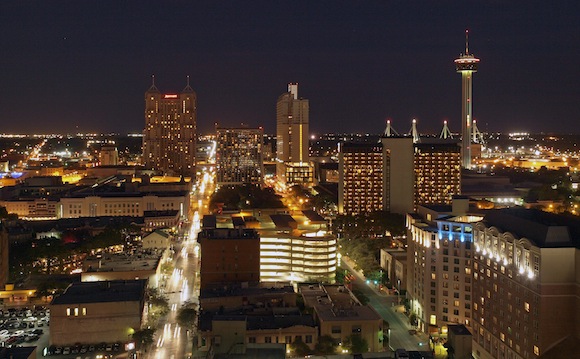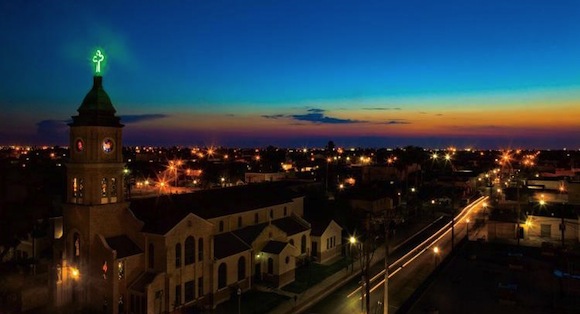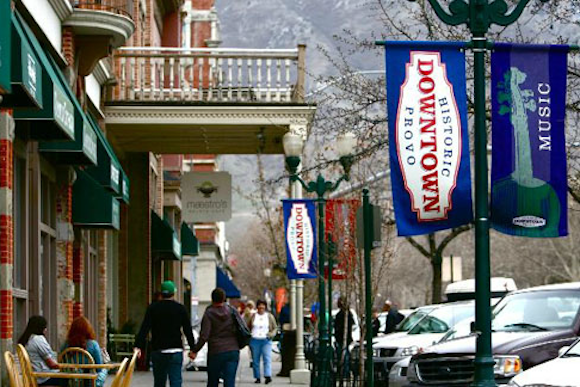By the time the first Baby Boomers turned 18, they had witnessed the rise of Elvis Presley, the launch of Sputnik, the introduction of the birth control pill, the “I Have a Dream” speech by Dr. Martin Luther King Jr. and the assassination of President John F. Kennedy.
Witnessing all that change didn’t dampen their appetite for change, however.
“They want to change everything, and they’re going to change retirement,” said Kenneth W. Gronbach, an author, futurist and demographer in Haddam, CT. “They changed education. They changed transportation. They’re about to change retirement. They’re going to be the youngest old people the nation has ever seen. They’re going to be playing air guitar until they’re 80.”
Members of the Baby Boom generation were, according to the U.S. Census Bureau, born between mid-1946 and 1964, making the earliest Boomers 67 years old and around retirement age. Because of the recession and housing crisis, some Baby Boomers have delayed retirement.
Watch for plastic surgery to go through the roof as Boomers attempt to stay young.
— Kenneth W. Gronbach, futurist and demographer
Whether they’re retired yet or not, many Baby Boomers are on the move and mostly in search of warm climates. From 2000 (when Boomers were between 36 and 54) to 2010 (when they were between 46 and 64), San Francisco’s Boomer population fell 10 percent; Chicago’s and New York’s fell 9 percent each.
Meanwhile, Las Vegas gained 20 percent more Boomers in that 10-year span, even more than Phoenix, which picked up 11.5 percent. And several towns in Florida showed even higher Boomer gains. But warm weather isn’t everything: Los Angeles lost 10 percent of its Boomers.
Of course, no one can live on sunshine alone. In addition to economic growth and affordable housing, which help make any area desirable, Boomers need access to health care. As they age, they’re becoming more interested in elective medical procedures, too.
“Watch for plastic surgery to go through the roof as Boomers attempt to stay young,” Gronbach said. “Boomers will take advantage of everything health care to the nines–more so than their parents.”
Many Boomers will move to traditional retirement locations, such as Arizona and Florida, according to Gronbach. In fact, Phoenix and Orlando made SpareFoot’s new list of Baby Boomer Boom Towns, but neither one came out on top.
To determine America’s Baby Boomer Boom Towns, we analyzed not just Boomer population growth for the country’s 100 most populated metro areas, but also per-capita growth in gross domestic product (GDP), per-capita personal income growth, housing affordability and number of health care workers per capita. GDP and personal income data are inflation-adjusted. Housing affordability is determined by the National Association of Realtors’ Affordability Index of Existing Single-Family Homes; the higher the number, the more affordable the housing market. Two metro areas didn’t have data for this metric, so we estimated housing affordability based on numbers for similar areas nearby.
Here is our list of America’s Baby Boomer Boom Towns.
1. San Antonio
San Antonio is growing a lot, and not just in terms of its Baby Boomer population. Its economy is doing well, yet housing remains affordable. The city attracts millions of tourists every year, thanks in part to the Alamo, the city’s most famous attraction.
It’s also a well-managed city, said Becky Dinnin, vice president of the San Antonio Chamber of Commerce. Most cities finance infrastructure and other public investments by selling bonds, and the better their bond rating, the easier it is to invest in the city’s future. San Antonio is the only American city with a population of at least 1 million to secure a AAA bond rating from all three major rating agencies, she said.
“That’s a bigger deal than most people understand. It means we can invest in ourselves in a robust way,” she said. “We have money we can spend on parks and on new highways and roads.”
The city also is diverse—with Hispanic, German, French and Czech influences—and is conveniently located.
“We’re halfway between the East and West coasts. It’s warm and close to the beach. That adds to the appeal,” Dinnin said.
Baby Boomer population growth 2000 to 2010: 8 percent
Average annual per-capita GDP growth: 3.5 percent
Average annual per-capita personal income growth: 2.1 percent
Housing affordability index: 198
Total health care workers per capita: 0.035
2. Boise, ID
Boise doesn’t lack recreation options. Want to go skiing? It’s a half-hour drive from town. Want to go hiking or biking? Check out the foothills just north of the city. Want to experience a new culture? Head to the Basque Block downtown.
Those options, along with economic growth and housing affordability, may be driving the nearly 12 percent growth in the Boomer population.
Baby Boomer population growth 2000 to 2010: 11.7 percent
Average annual per-capita GDP growth: 1 percent
Average annual per-capita personal income growth: 1.4 percent
Housing affordability index: 224.8
Total health care workers per capita: 0.036
3. Raleigh, NC
Raleigh has a lot going for it. It’s part of the Research Triangle area and is home to software makers Red Hat and SAS as well as North Carolina State University. It earned third place in our ranking in large part thanks to it Baby Boomer population growth, but its economic and health care numbers helped, too.
Baby Boomer population growth 2000 to 2010: 10.9 percent
Average annual per-capita GDP growth: 1.9 percent
Average annual per-capita personal income growth: 0.7 percent
Housing affordability index: 224.4
Total health care workers per capita: 0.034
4. Austin, TX
Many folks know Austin for its role as host of the annual South by Southwest and Austin City Limits festivals. But Austin is just an all-around great place to live. It also boasts the highest per-capita GDP growth of any metro area on our list, along with good numbers for housing affordability and health care access. Austin also is home to our favorite startup: SpareFoot ;).
Baby Boomer population growth 2000 to 2010: 6.4 percent
Average annual per-capita GDP growth: 3.6 percent
Average annual per-capita personal income growth: 1.6 percent
Housing affordability index: 202
Total health care workers per capita: 0.028
5. McAllen-Edinburg-Mission, TX
The McAllen area sits just across the Rio Grande River from Mexico, and its retailers draw customers from both sides of the border. It’s attracting Baby Boomers and others at a fast clip and offers good access to health care.
Baby Boomer population growth 2000 to 2010: 9 percent
Average annual per-capita GDP growth: 2.1 percent
Average annual per-capita personal income growth: 1.2 percent
Housing affordability index (estimated): 250
Total health care workers per capita: 0.030
6. Nashville, TN
Nashville isn’t just the capital of country music; it also boasts a bustling foodie and arts scene. Prestigious Vanderbilt University and its medical center call Nashville home, as does a full-scale replica of the Parthenon. It scores well on most of the metrics we analyzed, but its Baby Boomer population growth is on the small side.
Baby Boomer population growth 2000 to 2010: 2 percent
Average annual per-capita GDP growth: 3 percent
Average annual per-capita personal income growth: 2.4 percent
Housing affordability index: 236
Total health care workers per capita: 0.036
7. Orlando, FL
Orlando is a theme-park lover’s dream come true, with Disney World and Universal Studios maintaining a massive presence. The area’s economy is essentially flat in terms of per-capita GDP, but per-capita personal income growth and other factors earned it seventh place on our list.
Baby Boomer population growth 2000 to 2010: 10.5 percent
Average annual per-capita GDP growth: 0.07 percent
Average annual per-capita personal income growth: 1.6 percent
Housing affordability index: 229.3
Total health care workers per capita: 0.033
8. Phoenix
Phoenix may be just the ticket for Boomer sports fans: It’s the only metro area on our list with teams from all four major sports leagues: the NFL, Major League Baseball, the NBA and the NHL. Only 12 metro areas in the U.S. can claim the same. Phoenix definitely is attracting more Boomers, but its economy is growing somewhat slowly. Still, health care is accessible and housing is affordable.
Baby Boomer population growth 2000 to 2010: 11.5 percent
Average annual per-capita GDP growth: 0.5 percent
Average annual per-capita personal income growth: 0.8 percent
Housing affordability index: 231.2
Total health care workers per capita: 0.031
9. Chattanooga, TN
Chattanooga is an ideal destination for Baby Boomers who love technology or want to telecommute. It’s got the fastest Internet access in the country, which is helping drive economic growth. It’s also got the most health care workers per capita of any area on our list.
Baby Boomer population growth 2000 to 2010: 2.4 percent
Average annual per-capita GDP growth: 1.8 percent
Average annual per-capita personal income growth: 1.9 percent
Housing affordability index: 230
Total health care workers per capita: 0.044
10. Charlotte, NC
Charlotte’s economy is growing, thanks in part to the energy and financial sectors, and Boomers are moving in. It would rank even higher if it had more health care workers per capita, though.
Baby Boomer population growth 2000 to 2010: 7.2 percent
Average annual per-capita GDP growth: 1.5 percent
Average annual per-capita personal income growth: 1.5 percent
Housing affordability index: 229.7
Total health care workers per capita: 0.029
11. Columbia, SC
Columbia’s downtown revitalization has won acclaim, as has the University of South Carolina. While its economy is growing steadily, the city isn’t attracting as many Baby Boomers as other areas on our list, but it may in the future: Housing is affordable, and health care workers are relatively plentiful.
Baby Boomer population growth 2000 to 2010: 2.3 percent
Average annual per-capita GDP growth: 2.4 percent
Average annual per-capita personal income growth: 1.4 percent
Housing affordability index: 228.9
Total health care workers per capita: 0.042
12. Knoxville, TN
Knoxville, home to the University of Tennessee, is a little more than an hour from Great Smoky Mountains National Park. It offers affordable homes and access to health care along with economic opportunity. It would appear even higher on our list if more Boomers were moving there.
Baby Boomer population growth 2000 to 2010: 3.4 percent
Average annual per-capita GDP growth: 1.4 percent
Average annual per-capita personal income growth: 1.6 percent
Housing affordability index: 236.4
Total health care workers per capita: 0.041
13. Houston
Houston is a global center for the energy industry, which has helped spur its economic and personal income growth. It also benefits from the presence of several major hospitals.
Baby Boomer population growth 2000 to 2010: 1.2 percent
Average annual per-capita GDP growth: 2.3 percent
Average annual per-capita personal income growth: 2.9 percent
Housing affordability index: 225.3
Total health care workers per capita: 0.029
If you’re considering a move to Houston, check out our Houston Moving Guide. It includes a checklist and resources along with lists of top realtors, neighborhoods and more.
14. Jacksonville, FL
Jacksonville is perfect for water lovers, thanks to miles of ocean beaches adjacent to miles of the St. Johns River. As a group, Boomers are growing, but the city’s median age remains 35.5, which makes it Florida’s youngest city. Housing is quite affordable, though, and the city has its fair share of health care workers.
Baby Boomer population growth 2000 to 2010: 6.5 percent
Average annual per-capita GDP growth: 0.2 percent
Average annual per-capita personal income growth: 1.2 percent
Housing affordability index: 276.2
Total health care workers per capita: 0.037
15. Provo-Orem, UT
The Provo-Orem area, just south of Salt Lake City, has no shortage of water sports, either. Utah Lake offers fishing, boating and more. In the winter, skiing is just 20 minutes away. The number of health care workers per capita is lower here than for any other metro area on our list, but the economy is growing, as is personal income.
Baby Boomer population growth 2000 to 2010: 9.7 percent
Average annual per-capita GDP growth: 1.6 percent
Average annual per-capita personal income growth: 0.5 percent
Housing affordability index (estimated): 200
Total health care workers per capita: 0.025
Data sources: National Association of Realtors, U.S. Bureau of Economic Analysis, U.S. Bureau of Labor Statistics, U.S. Census Bureau
Photos courtesy of San Antonio Convention & Visitors Bureau, Austin Convention & Visitors Bureau, Greater Raleigh Convention and Visitors Bureau, Nashville Convention & Visitors Corp., Greater Phoenix Convention & Visitors Bureau, Chattanooga Convention & Visitors Bureau, Utah Valley Convention & Visitors Bureau, Greater Houston Convention and Visitors Bureau, Livability.com, Lawboiseid.com, Orlandobuzz.com


















